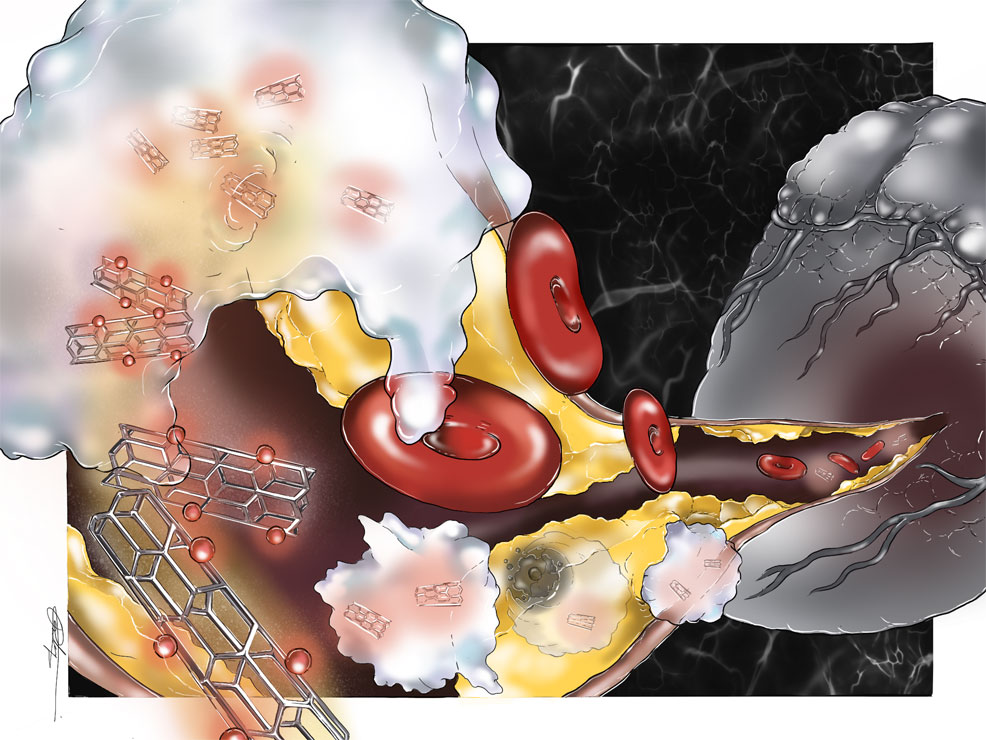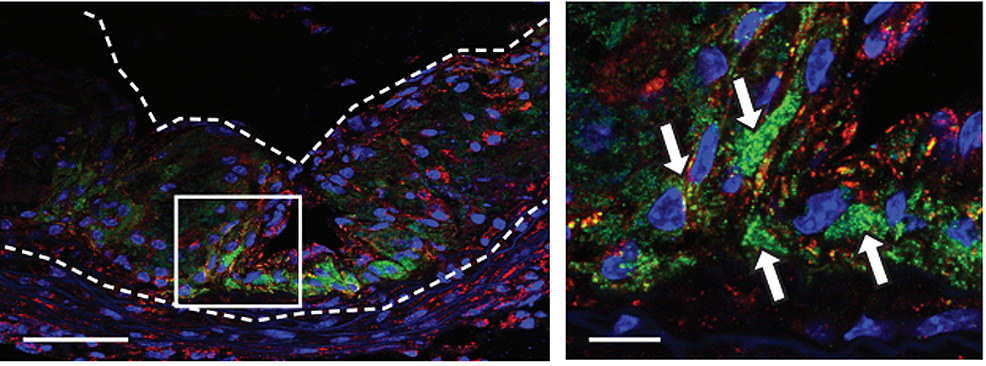
2nd February 2020 Nanoparticle eats away plaque that causes heart attacks Michigan State University and Stanford University scientists have created a nanoparticle that eats away – from the inside out – portions of plaques that cause heart attacks. Bryan Smith, Associate Professor of Biomedical Engineering at Michigan, and his team of colleagues developed a "Trojan Horse" nanoparticle that can be directed to eat debris, reducing and stabilising plaque. The discovery could be a potential treatment for atherosclerosis, a leading cause of death in the United States. The results, published this week in Nature Nanotechnology, show how the nanoparticle homes in on atherosclerotic plaque, due to its high selectivity to a particular immune cell type – monocytes and macrophages. Macrophages are a type of white blood cell in our immune system, which engulf and digest cellular debris, foreign substances, microbes, cancer cells, and anything else that does not have the type of proteins specific to healthy body cells. Once inside the macrophages of arterial plaques, the nanoparticle delivers a drug agent that can stimulate the cell to engulf and eat cellular debris, removing the diseased/dead cells. By reinvigorating the macrophages, plaque size is reduced.
Future clinical trials on the nanoparticle are expected to reduce the risk of most types of heart attacks, with minimal side effects due to the unprecedented selectivity of the nanodrug, according to Smith. His research is focused on intercepting the signalling of the receptors in macrophages and sending a message via small molecules using nano-immunotherapeutic platforms. Previous studies have acted on the surface of the cells, but this new approach works intracellularly and has been effective in stimulating macrophages. "We found we could stimulate the macrophages to selectively eat dead and dying cells – these inflammatory cells are precursor cells to atherosclerosis – that are part of the cause of heart attacks," Smith said. "We could deliver a small molecule inside the macrophages to tell them to begin eating again." This approach also has applications beyond atherosclerosis, he added. "We were able to marry a groundbreaking finding in atherosclerosis by our collaborators with the state-of-the-art selectivity and delivery capabilities of our advanced nanomaterial platform," explained Smith. "We demonstrated the nanomaterials were able to selectively seek out and deliver a message to the very cells needed. It gives a particular energy to our future work, which will include clinical translation of these nanomaterials using large animal models and human tissue tests. We believe it is better than previous methods." Smith has filed a provisional patent and will begin marketing it later this year.
The dotted line outlines the atherosclerotic artery and the green represents the nanoparticles, which are in the plaque. The red indicates macrophages, which is the cell type that the nanoparticles are stimulating to eat the debris. Credit: Michigan State University
Comments »
If you enjoyed this article, please consider sharing it:
|








